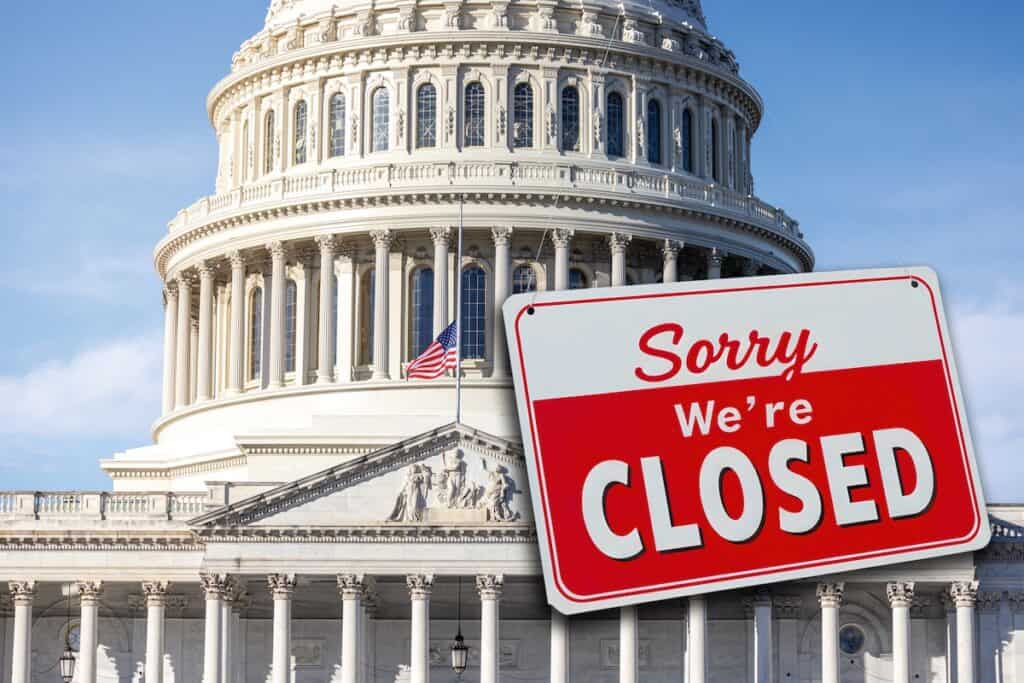
A government shutdown occurs when Congress does not pass legislation allocating funding for the federal budget, known as appropriations bills. The federal fiscal year runs from Oct. 1 to Sept. 30 of each year.
In order to keep the government running, the federal government must pass appropriations bills for the new fiscal year, or they must pass a Continuing Resolution, otherwise known as a CR. A CR temporarily funds the government by continuing funding levels from the previous fiscal year, thus giving lawmakers extra time to negotiate and vote on full appropriations bills. All CRs include an expiration date set by Congress.
If Congress does not pass legislation authorizing funding, the federal government must shut down, pausing many of its services and day-to-day activities until a funding bill is passed. Essential services will continue throughout a shutdown but may be delayed.
A government shutdown immediately impacts thousands of federal employees, not just those that reside in the nation’s capital. This includes thousands who live in every U.S. state and territory across the country. They’re responsible for services that range from workers answering questions on the phone about Social Security benefits and air traffic control officers who approve flight movements at every major airport to rangers who help operate smooth trips throughout national parks and local officials working on public health issues in our communities.
The current shutdown is putting around 40% of federal workers – over 700,000 people – on unpaid leave. Other federal workers who are deemed essential are required to work without pay.
Each individual agency and office must make contingency plans for a government shutdown, which decides who must work and who will be forced to stay home throughout the gridlock. No matter if they work or not, no one will be paid until the government opens again. Once the shutdown ends, workers will finally receive back pay.
A government shutdown occurs when Congress does not pass, or the President does not sign, a federal budget for the new fiscal year. If neither the House of Representatives nor the Senate can come to an agreement on the legislation (which needs a simple majority of votes in the House and 60 votes in the Senate) and if the President does not sign the legislation to enact the spending measures, the government will shut down. It will remain shut down until the funding legislation is passed by both the House and the Senate and the bill is signed by the President.
Federal employment has often offered Black people a pathway to the middle class. Black people make up 20% of federal workers, despite making up 14% of the total population.
Many Black workers will be hit harder by forced unpaid leave. According to the Housing Finance Policy Center at the Urban Institute, Black federal employees struggle more than their white peers to replace their missing income.
Black communities also disproportionately rely on services at risk during a government shutdown. For example, if the government shutdown continues for too long, food assistance programs like SNAP, that help millions of Black families, are at risk of continuing with rapidly diminishing funds.
“Mandatory” services will continue to function — this includes public safety and law enforcement personnel, the U.S. Postal Service, and Social Security benefits. In prior shutdowns, border protection, in-hospital medical care, air traffic control, and power grid maintenance have also continued.
However, with no paycheck in sight and with large portions of federal staff on unpaid leave, a shutdown often leads to increased administrative delays and decreased service. These snags ripple outward, resulting in interruptions in Medicare, Medicaid, and food assistance programs, underfunded FEMA disaster relief responses, delays in air travel, delays in passport processing, and closed federal parks.
A government shutdown will end when either funding (known as appropriations) legislation is passed and signed by the President or when a Continuing Resolution is passed.
Black communities will be among the hardest hit by the OBBBA’s funding cuts, facing higher costs, fewer resources, and deeper debt.
The Trump Administration’s attack on the federal workforce impacts thousands of Americans. Here are critical rights and protections federal workers have.
Congress must prioritize funding for necessary programs that affect education equity, economic justice, political participation, and the criminal justice system.
